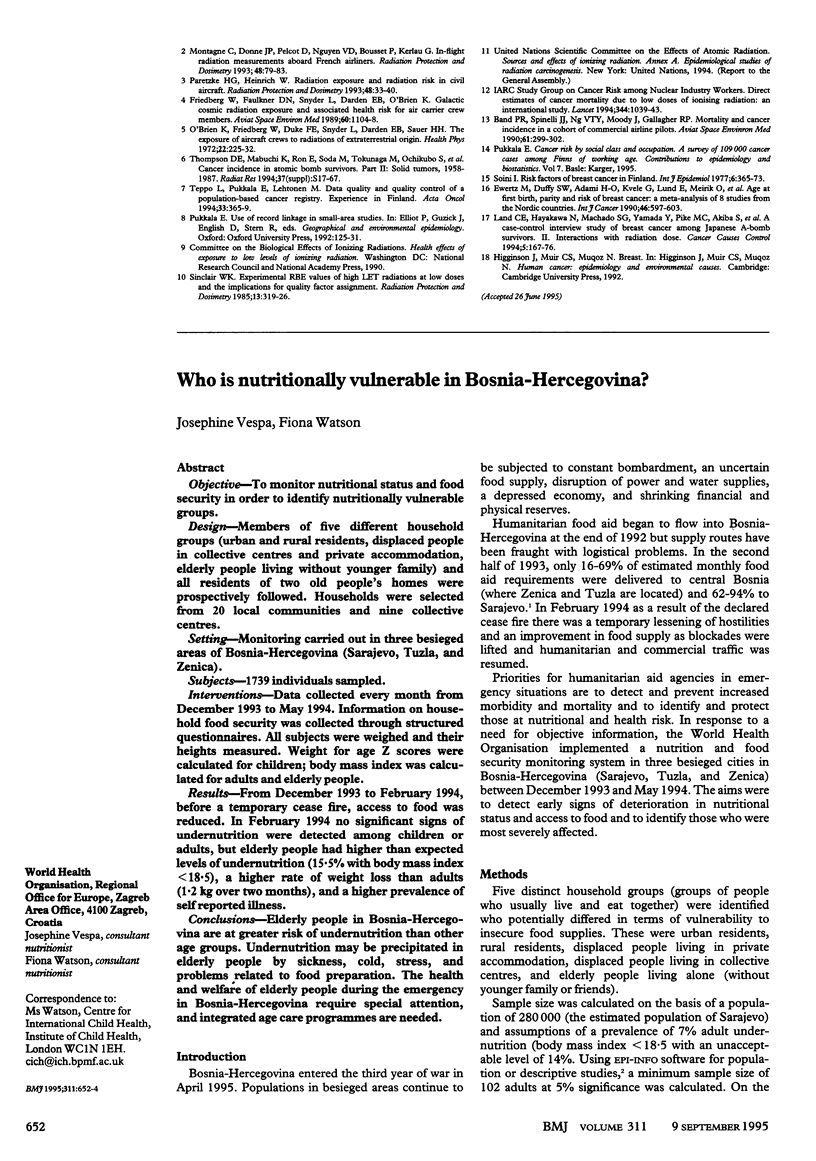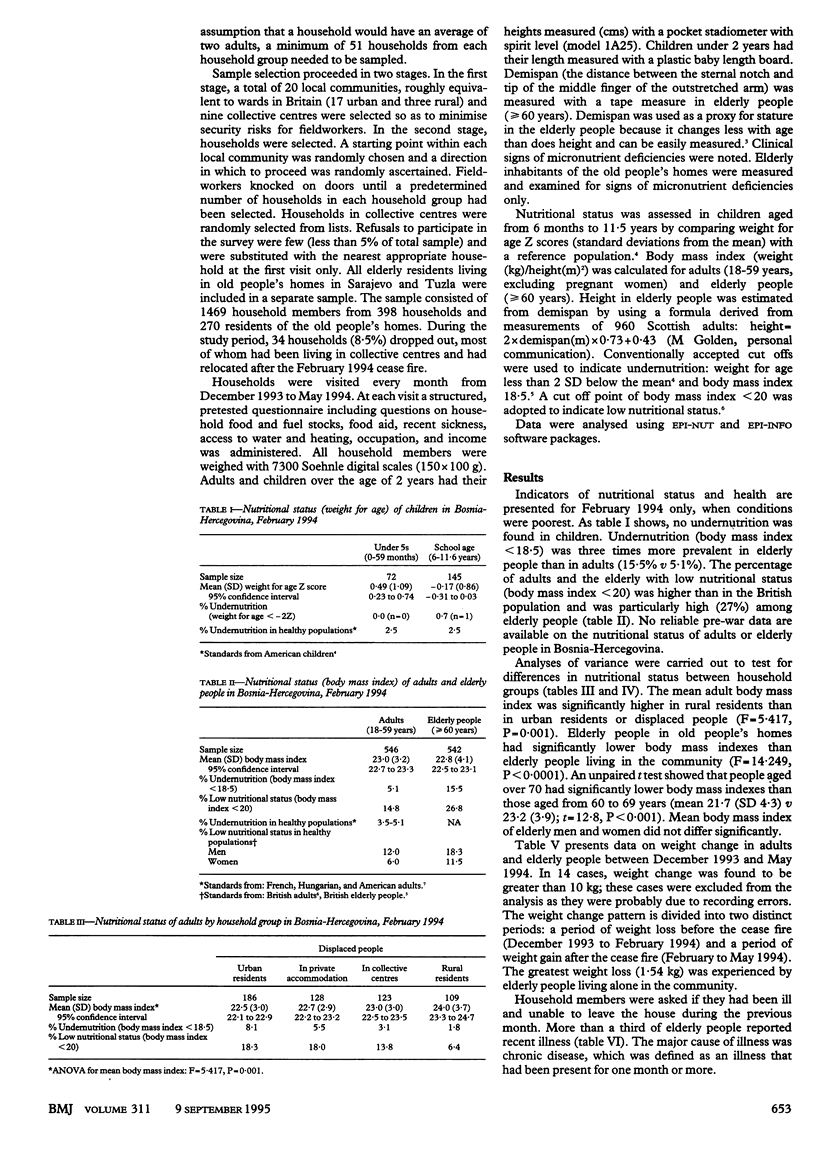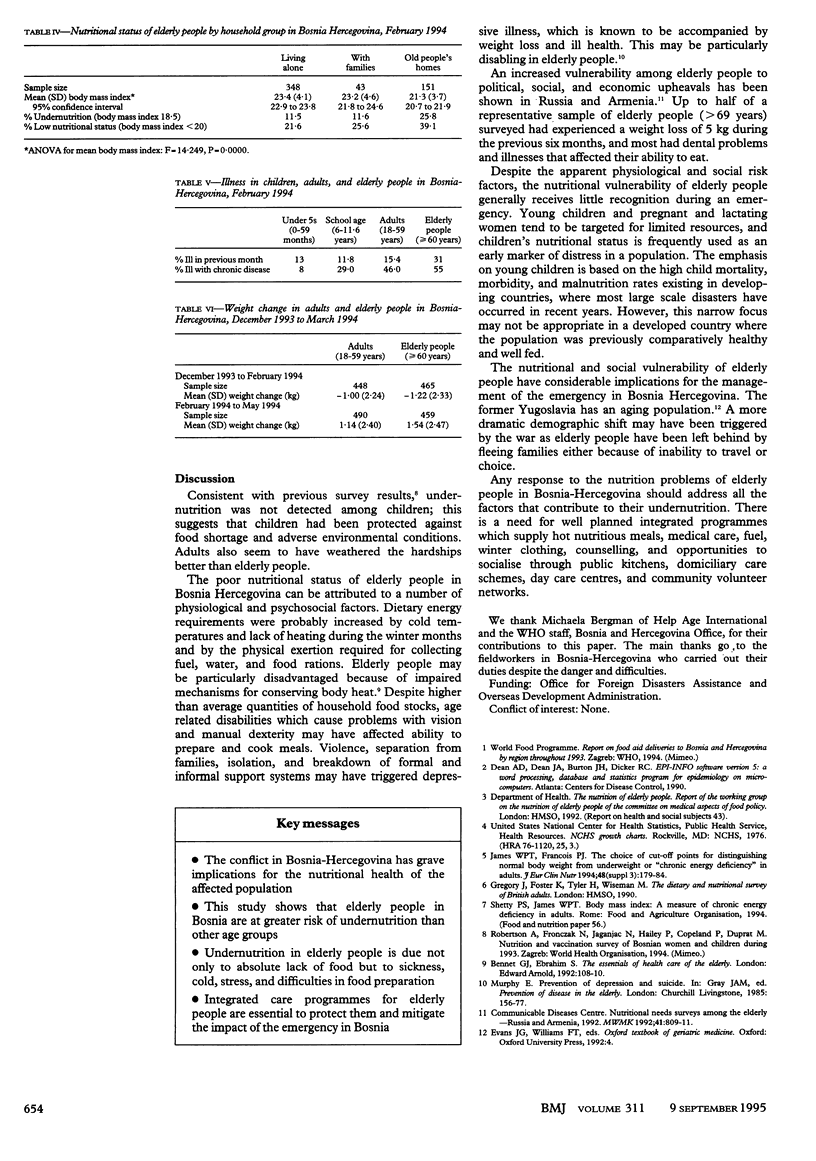Abstract
OBJECTIVE--To monitor nutritional status and food security in order to identify nutritionally vulnerable groups. DESIGN--Members of five different household groups (urban and rural residents, displaced people in collective centres and private accommodation, elderly people living without younger family) and all residents of two old people's homes were prospectively followed. Households were selected from 20 local communities and nine collective centres. SETTING--Monitoring carried out in three besieged areas of Bosnia-Hercegovina (Sarajevo, Tuzla, and Zenica). SUBJECTS--1739 individuals sampled. INTERVENTIONS--Data collected every month from December 1993 to May 1994. Information on household food security was collected through structured questionnaires. All subjects were weighed and their heights measured. Weight for age Z scores were calculated for children; body mass index was calculated for adults and elderly people. RESULTS--From December 1993 to February 1994, before a temporary cease fire, access to food was reduced. In February 1994 no significant signs of undernutrition were detected among children or adults, but elderly people had higher than expected levels of undernutrition (15.5% with body mass index < 18.5), a higher rate of weight loss than adults (1.2 kg over two months), and a higher prevalence of self reported illness. CONCLUSIONS--Elderly people in Bosnia-Hercegovina are at greater risk of undernutrition than other age groups. Undernutrition may be precipitated in elderly people by sickness, cold, stress, and problems related to food preparation. The health and welfare of elderly people during the emergency in Bosnia-Hercegovina require special attention, and integrated age care programmes are needed.
Full text
PDF




